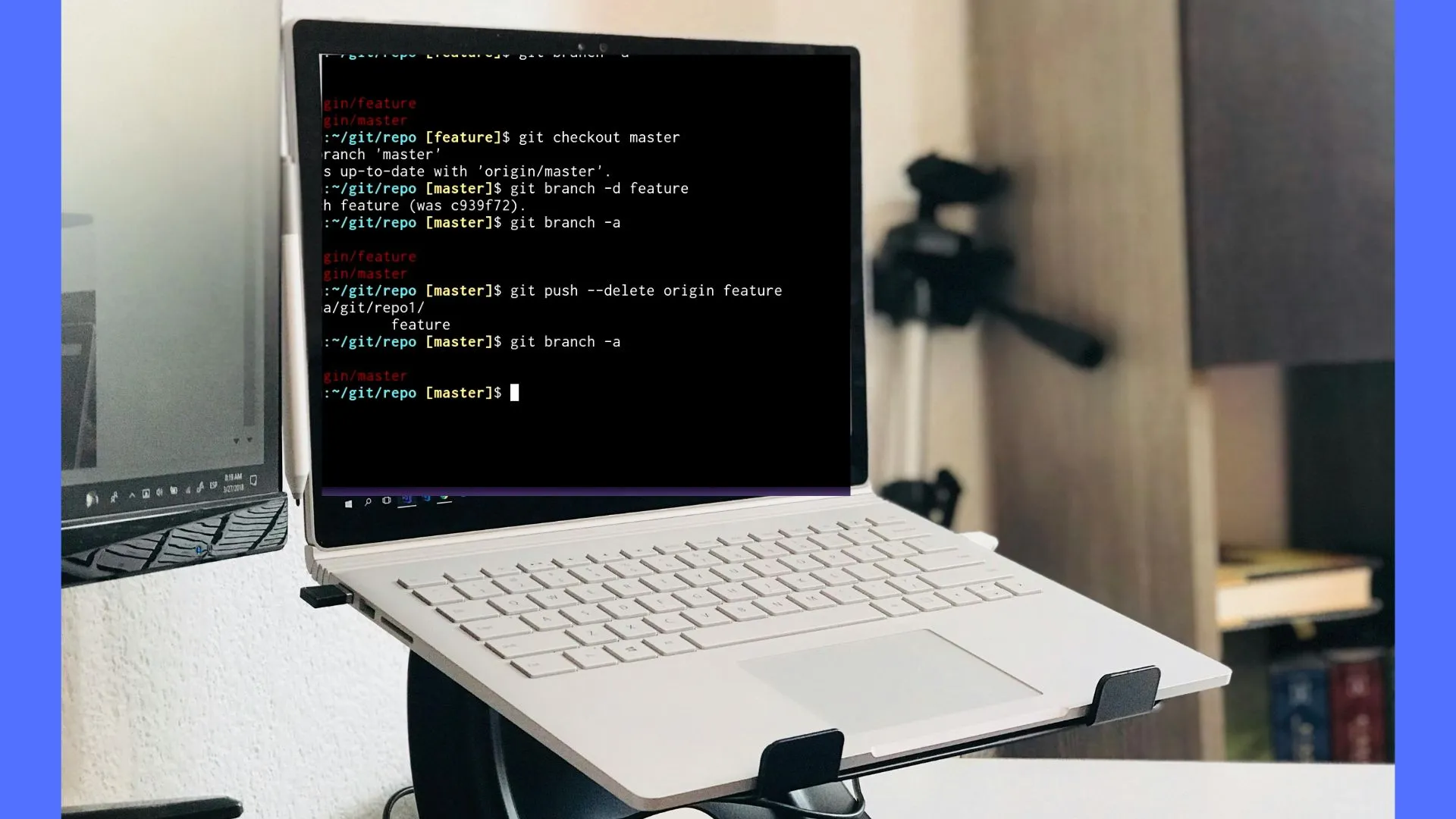Version control systems like Git are the backbone of modern software development. They enable developers to track changes, collaborate effectively, and revert to previous versions if necessary. A powerful feature within Git is branching. Branching allows you to create isolated workspaces to experiment with new features, fix bugs, or develop different functionalities without affecting the main codebase. But what happens when a branch has served its purpose? This guide delves into the process of как удалить ветку git how to delete a Git branch, both locally on your system and remotely on hosting platforms like GitHub.
Identifying When to Delete a Git Branch
Not all Git branches are permanent residents in your repository. Here are some critical scenarios where deleting a branch is considered good practice:
- Merged Branches: After successfully integrating the changes from a feature branch into the main codebase (often called “master” or “main”), the feature branch itself becomes redundant. Deleting it helps declutter your repository.
- Completed Bug Fixes: Branches created to address specific bugs can be removed once the fix is integrated and thoroughly tested. This ensures that your repository reflects the project’s current state.
- Abandoned Branches: If a branch has been inactive for a significant period and is unlikely to be revived, deleting it keeps your repository organized and easier to navigate.
Preparing for Branch Deletion
Before we dive into the deletion process, ensure you have Git installed and configured on your system. You’ll also need a Git repository initialized for your project. If you’re new to Git, refer to the official documentation for comprehensive setup instructions.
Deleting Local Branches: A Clean Getaway
The git branch -d command is your go-to tool for deleting local branches. However, an important detail is that you can only delete branches you’re not working on (i.e., not checked out). To verify your current branch, use the git branch command.
Here’s a step-by-step guide on deleting a local branch named “feature/my-new-feature”:
- Verify Your Current Branch: Use the git branch command to see which branch you’re currently working on.
- Switch Branches (if necessary): If you’re not on the branch you want to delete, use the git checkout <branch_name> command to switch to the desired branch.
- Delete the Branch: Execute the git branch -d feature/my-new-feature command to remove the branch.
Force Deleting Local Branches: Proceed with Caution

If you have uncommitted changes on the branch you’re trying to delete, Git will prevent deletion by default to safeguard your work. In such cases, you can use the -D flag with the git branch command to force deletion. However, use this option with extreme caution as it permanently discards all uncommitted changes on that branch. Ensure you have backups or don’t need the uncommitted work before proceeding.
Conquering Remote Branches
Once you’ve deleted local branches, remove them from your remote repository (e.g., GitHub) to maintain consistency. To achieve this, use the git push command with the –delete flag followed by the branch name.
For instance, to delete the remote branch “feature/my-new-feature” from the origin (typically your remote repository name), use the following command:
git push origin –delete feature/my-new-feature
Branch Deletion: The Final Farewell
Effectively managing Git branches is crucial for a streamlined and organized development workflow. Following the steps outlined above, you can confidently delete Git branches locally and remotely, keeping your project repository clean and efficient. Remember to carefully consider the purpose of a branch before deleting it, and exercise caution when using the force deletion option.
Pro Tips for Branch Management
- Regular Pruning: Regularly prune your remote repositories to remove any branches deleted locally. This keeps your remote repository in sync and reduces clutter.
- Visualize Your Branches: For a more graphical interface for managing branches, consider using visual Git clients like GitKraken or Sourcetree. These tools provide a user-friendly interface for visualizing and managing your branches.
- Branching Strategies: Implement robust branching strategies like Gitflow to streamline your development process and branch management. Gitflow offers a structured approach for creating feature, development, and release branches, fostering a more organized development flow.
Beyond the Basics: Advanced Considerations for “как удалить ветку git”
While the core concepts of deleting Git branches remain consistent, there are some advanced scenarios you might encounter:
- Deleting a Currently Checked Out Branch: If you accidentally try to delete the branch you’re currently working on, Git will throw an error. To resolve this, it would help if you switched to a different branch before attempting deletion.
- Deleting a Protected Branch: Some remote repositories (like GitHub organizations) allow administrators to designate protected branches. These branches require additional permissions for deletion. If you encounter this scenario, consult your repository’s documentation or administrator for the specific steps involved.
- Recovering Deleted Branches: Git doesn’t permanently erase deleted branches immediately. However, you might be able to recover a recently deleted branch using the git reflog command, which displays a history of your Git commands. Recovery success depends on various factors, including how much time has passed since deletion and subsequent Git operations performed.
Final Words
Understanding how to delete Git branches is essential for any Git user. Following the guidelines and considerations outlined in this article will enable you to effectively manage your branches, maintain a clean repository, and streamline your development workflow. Effective branch management is a cornerstone of efficient and collaborative software development.
READ ALSO: Error: Error:0308010c:Digital Envelope Routines::Unsupported

